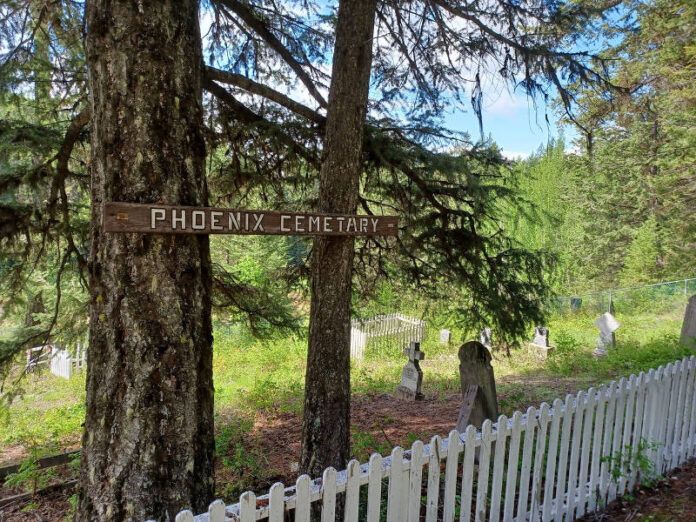A project to scan the Upper Phoenix Cemetery at the former site of the 1890s copper mining city has discovered eight unmarked graves.
The work with ground penetrating radar was done in late May by Precision Radar Scanning of Kelowna.
The Boundary Historical Society received grants from the B.C. Historical Federation ($4,000) and the Regional District of Kootenay Boundary for the project.
Society President Joan Heart says there may have been more graves but it’s unclear.
“There’s some other places maybe towards the center of the upper cemetery that might have been graves but it’s just too disintegrated underneath the surface to know for sure,” Heart said in an interview with Vista Radio.
Heart says the lower portion has been meticulously maintained but they’ve wondered for years what was in the upper section.
The idea to do ground penetrating radar came after the society saw Indigenous groups using the technology to scan their lands, Heart explained.
The society is pleased with the results of their project.
“We’re really happy. We have eight graves marked and we’re going to develop and put markers there and picket fences and a kiosk and we’re really going to develop the upper cemetery,” she said.
Conceptual drawings and drone footage have been produced and submitted to the B.C. Historical Federation.
“It’s been cleaned up and cleared out. It was overgrown a bit. So we’re getting there. But I’m really happy, really positive about this,” she said.
Heart says it’s all been done through countless volunteer hours by members of the society and the Boundary Woodworkers Guild.
But the names of the dead won’t be on the markers because all the records are either lost or missing.
Phoenix was an “amazing mining mini city” with a population that peaked around 4,000. It only lasted 25 years during the copper mining boom. Heart said it was a leading copper producer in North America, pulling out 18,000 tons of ore per month to be processed in Grand Forks.
“It was quite phenomenal for the length of time it lasted,” she said.
All that’s left are the cemetery and the cenotaph at the site, 13 kilometers northwest of Grand Forks (6 kilometers east of Greenwood).
Many of those who died at the time were victims to mining accidents or women and children lost to the Spanish Flu epidemic and tuberculosis.
“People will be honoured. People too will be remembered. It’s a lovely place to visit if you haven’t been there. I know that sounds strange but it is so peaceful and lovely out there with the forest and just all the work that’s been done,” Heart said.


